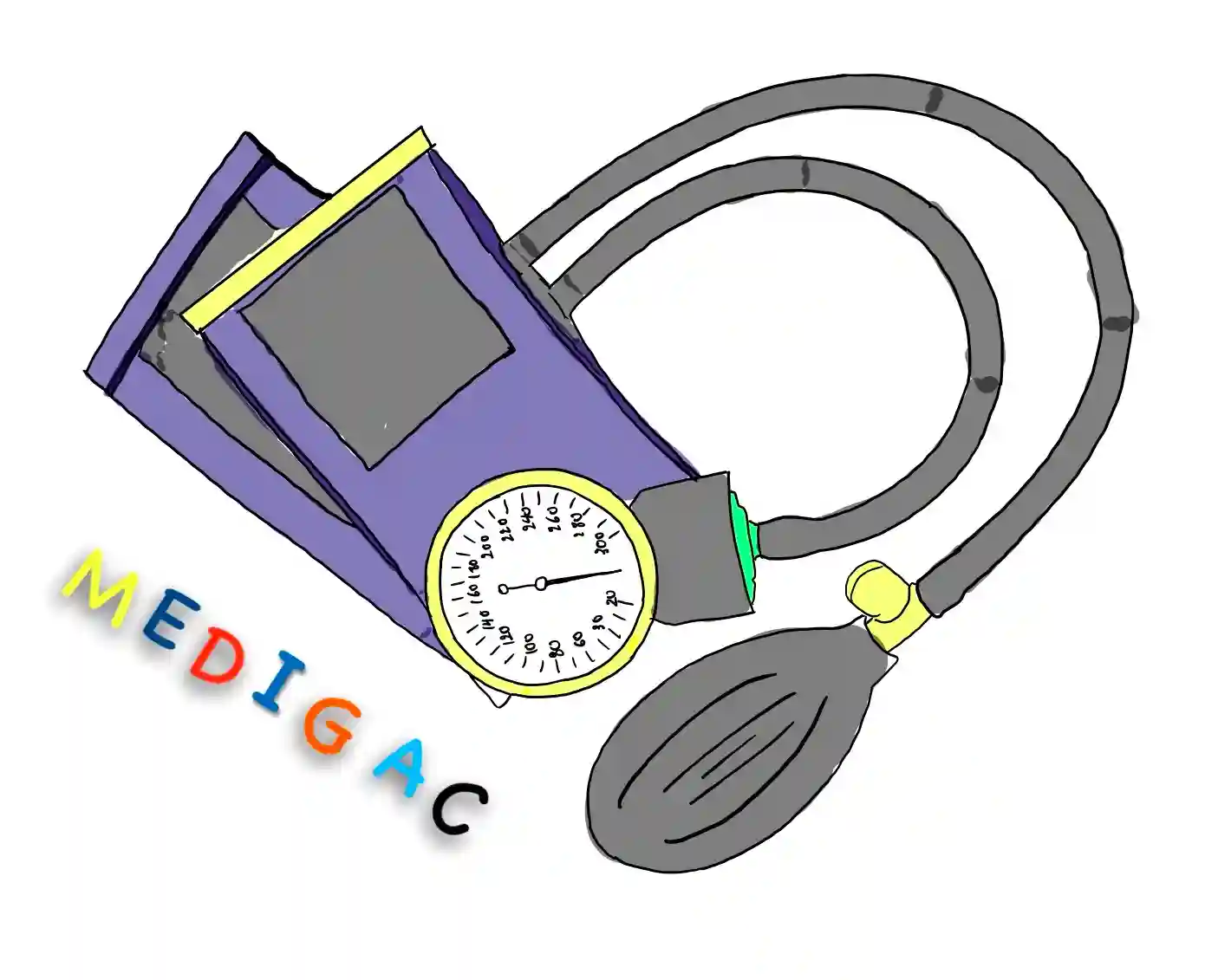Paediatrics blood pressure measurement in a new born or in a mature children can help to diagnose various diseases. We have discussed total eight topics, and they are :
- Definition
- BP measurements instruments
- BP recording site
- Methods for measuring BP
- BP according to age and sex
- Approximate BP calculation
- Hypertension
- Auscultatory gap
I. Blood pressure :
Because it is strongly related to the force and pace of the heartbeat, as well as the diameter and flexibility of the artery walls, blood pressure in the circulatory system is frequently monitored for diagnosis.
Normal range :
| Age | Systolic BP(mmHg) | Diastolic BP(mmHg) |
| 1. Neonate( ≤28days ) | 60-90 | 20-60 |
| 2. Infants( ≤1 year ) | 87-105 | 53-66 |
| 3. Toddler( 1-3 years ) | 95-105 | 53-66 |
| 4. Preschooler( 3-5 years ) | 95-110 | 56-70 |
| 5. School-Aged Child( 6-12 years ) | 97-112 | 57-71 |
| 6. Adolescent( Upto 18 years ) | 112-128 | 66-80 |
II. Instruments to measure BP :
We mainly use three types of devices to measure BP, and they are – Sphygmomanometer, Doppler ultrasound study, Oscillometry.
- Sphygmomanometer – There are mainly two types of sphygmomanometer, and they are Mercury type and Aneroid type.
- Doppler ultrasound study – Only when the artery flow changes during each heartbeat does a Doppler detect flow and create sounds. The premise behind using a Doppler to measure blood pressure is to obstruct arterial blood flow by inflating a cuff and then deflating it until the flow returns to normal.
- Oscillometry – The oscillometric approach is used by the majority of noninvasive blood pressure monitors. The cuff is wrapped around the patient’s arm and inflated with air until the external pressure surpasses the intra-arterial systolic pressure and arterial flow beyond the cuff stops. The bladder pressure in the cuff is gradually released.
- Digital method – digital tool is used, most simple method to measure blood pressure.
III. Blood pressure recording site :
In brachial artery pressure, blood pressure should always be taken in the upper extremity. And the pressure in the popliteal artery in the lower extremities.
This dual recording may be used to determine an aortic coarctation. Lower limb pressure is typically 10-20 mmHg higher than upper limb pressure.
Pressure measurement in the lower extremities :
- Popliteal fossa auscultation
- Child should be in prone position
- Apply the cuff to the lower thigh above the knee.
IV. Methods for measuring BP by Sphygmomanometer :

There are mainly two methods to measure BP by sphygmomanometer, they are Brachial artery blood pressure and Flush method.
- The examiner used to palpate the right brachial artery by inflating the cuff until the pulse was impalpable (systolic BP) and then slowly deflating the cuff at a rate of 2-3 mmHg per second until tapping sounds appeared.
- The child’s systolic blood pressure is determined by the first sound, and the child’s diastolic blood pressure is determined by the fifth sound or cessation of sound, according to Korotkoff.
- Aortic regurgitation, arteriovenous fistula, and pregnant korotkoff sound can be heard even when the cuffs are completely deflated, resulting in a zero reading. In these circumstances, Korotkoff’s fourth sound is recognised as diastolic blood pressure.
V. BP according to age and sex :
- Because blood pressure varies with age, a nomogram should be utilised to evaluate a recorded BP reading.
- The blood pressure rises with age until the age of 18 years.
- Boys and females experience different levels of pressure as adolescents.
- A blood pressure reading that is frequently above the 95th percentile should be evaluated.
VI. Approximate BP calculation :
- Systolic blood pressure = (Age in years) * 2+ 90mmHg
- Diastolic blood pressure = (Age in years) + 60mmHg
- Pulse pressure = The distinction between systolic and diastolic blood pressure is this. Normally, the pressure is between 30 and 60 millimetres of mercury.
VII. Hypertension :
For children aged more than 13 years old, we use the normal BP values. Sometimes we use percentile method to measure BP in children aged 1 to 13 years.
We use percentile method to measure the BP by calculating Z-Score.
| Category | For children aged 1 to <13 years |
| 1. Normal BP | <90th percentile |
| 2. Elevated BP | ≥90th to <95th percentile |
| 3. Stage 1 HTN | ≥95th to <95th percentile + 12mmHg |
| 4. Stage 2 HTN | ≥95th percentile + 12 mmHg |
- Elevation of systolic and diastolic blood pressure above the 95th percentile for age and gender, or more than 2 SD above the mean.
- High normal or borderline blood pressure is defined as readings that fall between the 90th and 95th percentiles.
- Hypertensive crisis occurs when blood pressure is more than three standard deviations above the mean.
VIII. Auscultatory gap :
Between systolic and diastolic pressure, korotkoff sound disappears in about 20% of old hypertensive people and even in youngsters. The examiner tries to palpate the systolic pressure first because if the initial sound is missed, the systolic pressure would be falsely low.